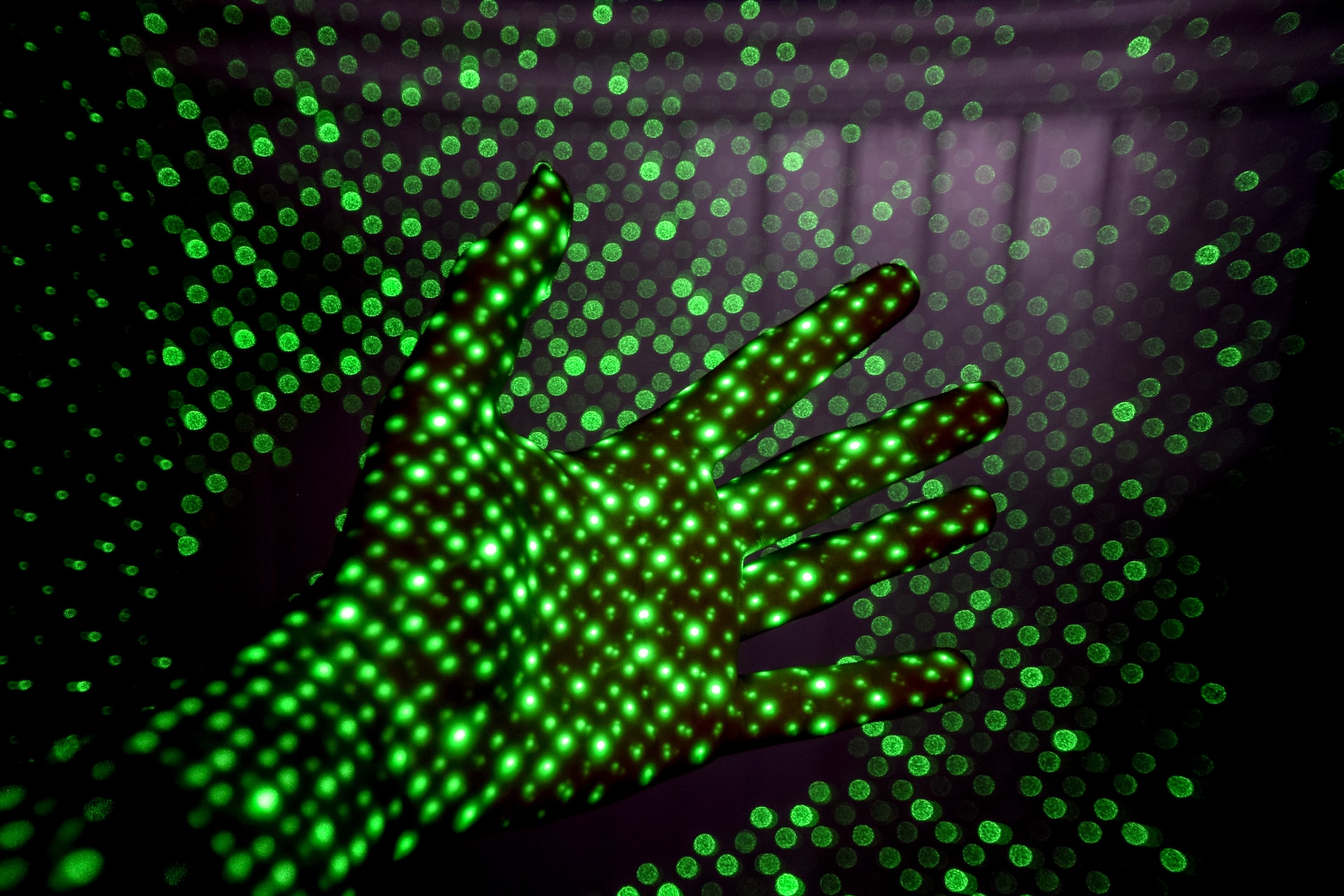Hey crew! Does everyone have their clothing interface? That would be the new uniforms.
I know we are a small outfit, but we are finally making enough money to move into the 23nd Century and these new uniforms are our celebration of that! These uniforms use a touch responsive fabric in the left forearm that allows you to interface with the ship’s computer.
Touch-responsive fabric armbands, pioneered the American Chemical Society, interprets a user’s touch into images on a computer. The ACS researchers used a pressure-sensitive hydrogel sheathed in knit silk and coated in graphene to create an electrically conductive, flexible touch pad. Users slide their fingers across the touch-responsive region to communication commands into the system.
Imagining this concept in the future is both easy and fun! I like this future technology’s use in science fiction for its simplicity. This concept is an easy way to add a futuristic feel to any science fiction story by referencing its existence. But in reality, this tech can cause a fundamental change in society the same way the iPhone did in 2007. The public saw the iPhone as just a new cool, more complicated cell phone. But looking back, human interaction with both phones and society drastically changed with the iPhone. For example, instant connection, shorter attention spans, and forgiving being ignored when a text arrives. Adoption of touch responsive clothing has the same potential.
Why clothing interfaces and not AR lenses?
AR, and VR, have seen a slow adoption by the public. Part of that is that both technologies are still in their infancy. Developers need to overcome hurdles around ease of use, cost, comfort of the devices, and so on. But another large part, in my opinion, is interfacing with the AR. Right now, users must pull out a phone or computer to do anything but passively receive information from their AR device. Interfaces like a clothing touch pad can bridge that gap.
Clothing interfaces, however, have the potential to change our interaction with the world. For instance, no more tech-neck or people bumping into inanimate objects because they are too busy looking at their phones and not the world around them.
The changes may be more inherent. Do these interfaces come as a sleeve one can wear over other clothing? Unsightly or a fashion statement. Do buyers expect their clothing to come with an interface as a matter of course? What gestures become common place (like pinch and swipe on a smart phone). Does touching your forearm become a social cue to pause in conversation in the same way as picking up your phone?
By including these foreign interactions into your story as commonplace, you create the feel of an advanced society. What other interactions would a clothing interface generate? Let me know in the comments! And be sure to check out my other posts!
May Imagination Reign!

